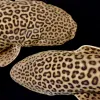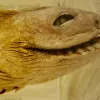The blind shark (Brachaelurus waddi) is lecithotrophic viviparous— the eggs are carried inside the mother’s body and the embryos develop there until they are ready to hatch. Rather than providing nutrients to their babies through a placenta like mammals do, this system utilizes yolk sacs like the one attached to the blind shark baby pictured. These Australian sharks like to live near rocky, high-intensity coastlines. They have the ability to survive for up to 18 hours outside of the water, allowing them to endure if stranded in a shallow tide pool until the high tide comes back in to rescue it.
Sharks from the Vault
The sharks housed in the Smithsonian National Museum of Natural History's collections include some of the most beautiful and bizarre sharks from around the world. Here are a few that are particularly striking to the eye.
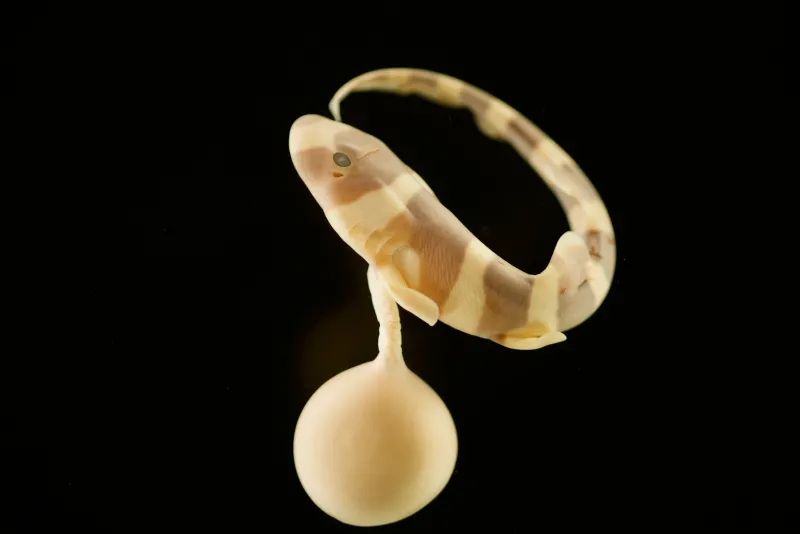
A Blind Shark Baby
Credit: Smithsonian Institution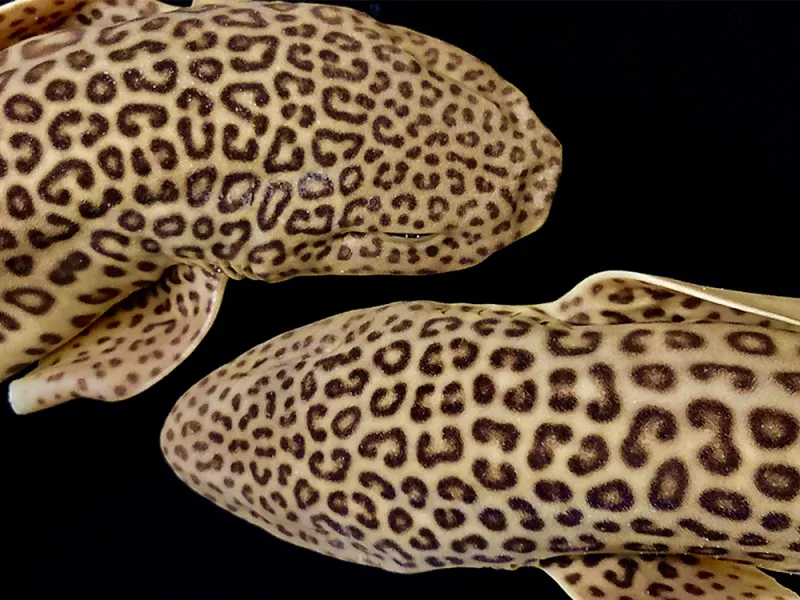
Leopard Catsharks
Credit: Smithsonian InstitutionThese gorgeous sharks are leopard catsharks (Poroderma pantherinum) found in the waters off of South Africa. Leopard catsharks get their name from their beautiful, widely variable skin patterns. There are three recognized marking configurations. Seen here is the typical “pantherinium” which is made up of rosettes and broken lines. The other two are considered extreme colorations of a gradient of spot sizes. On one end of the spectrum there is the “marleyi” pattern with its large round spots that was once thought to be a separate species. At the other end is the “salt and pepper” coloration that has dense packs of dots.
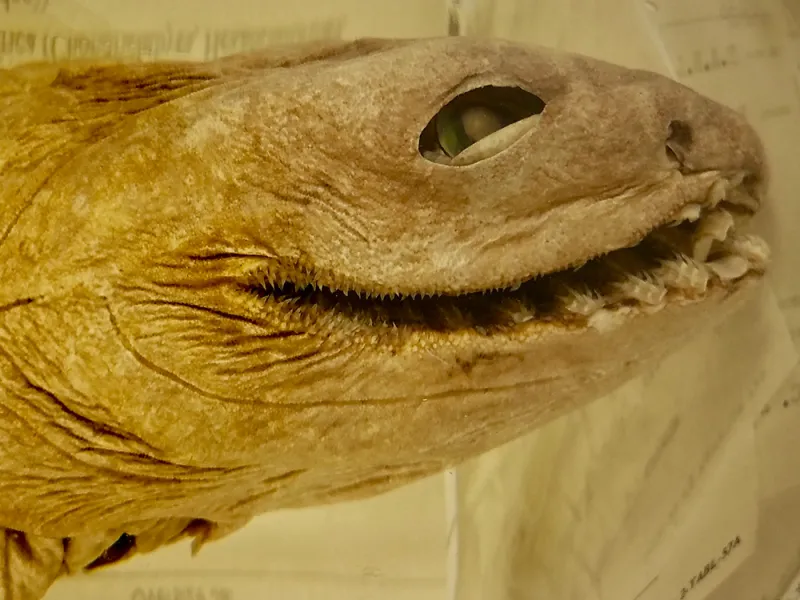
A Toothy Grin
Credit: Smithsonian InstitutionThe southern African frilled shark (Chlamydoselachus africana) is a very rare shark species that was only just recently described by scientists nine years ago. Found only in the deep waters off of southern Africa, it is an elusive relative of the equally rare frilled shark (C. anguineus). Both species, which are difficult to tell apart, have long eel-like bodies reminiscent of a sea serpent. These two surreal looking frilled shark species have been called “living fossils” due to some of their more primitive features. Notable are the extremely flexible jaws that allow it to swallow cephalopod prey whole.
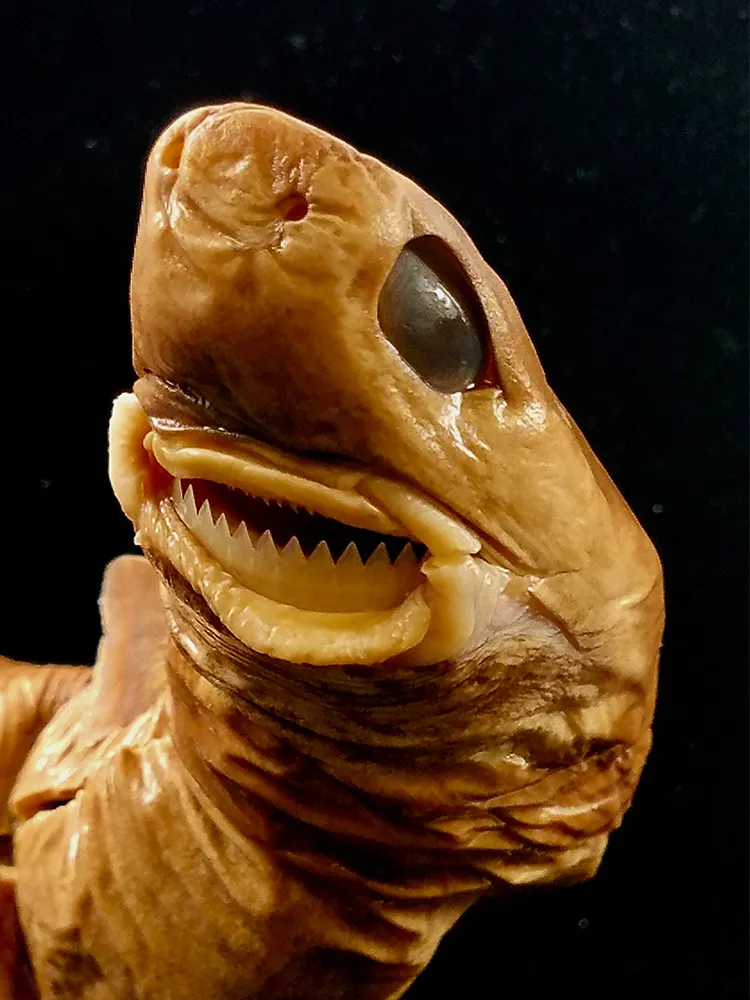
Cookie Cutter
Credit: Smithsonian InstitutionThis cookie-cutter shark (Isistius brasilienses) has a unique bite mark that they leave behind on their prey. Using their razor-sharp bottom teeth and powerful suction lips, the shark latches onto its prey and slices out a circular chunk of skin. The neat, cookie-shaped round scars left behind are seen on marine mammals, other shark species, and large fish that get bitten by this small, but fierce predator.



